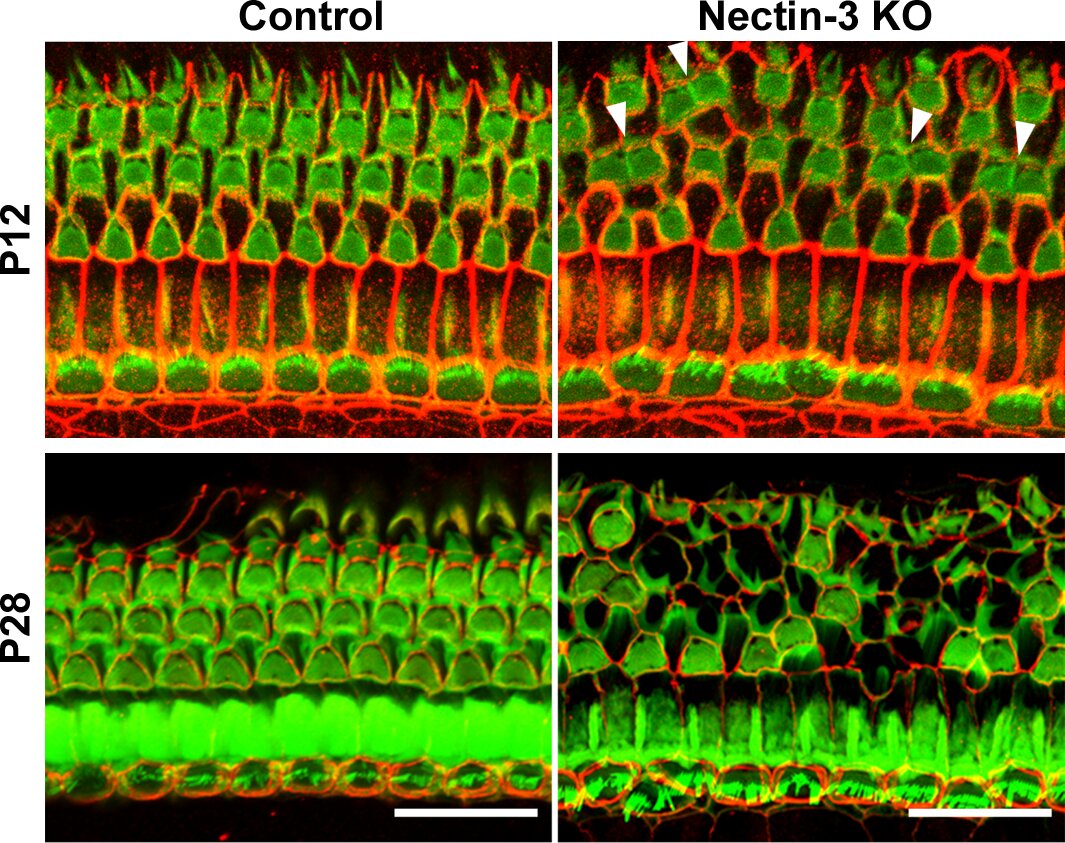
Artist’s reconstruction of Gangtoucunia aspera as it would have appeared in life on the Cambrian seabed, approximately 514 million years ago. The individual in the foreground has part of the skeleton removed to show the soft polyp inside the skeleton. Reconstruction by Xiaodong Wang. Credit: Reconstruction by Xiaodong Wang.
An exceptionally well-preserved collection of fossils unearthed in China’s eastern province of Yunnan has helped scientists solve an age-old riddle of the evolution of life on earth, revealing what the first animals to make skeletons looked like. The results were published today in Proceedings of the Royal Society B.
The first animals to build tough, sturdy skeletons suddenly appear in the fossil record in the geological blink of an eye around 550 to 520 million years ago in an event called the Cambrian Explosion. Many of these early fossils are simple hollow tubes ranging from a few millimeters to several centimeters in length. However, the type of animals that made these skeletons was almost completely unknown, as they lacked the preservation of the soft parts necessary to identify them as belonging to the major groups of animals that are still alive today.
The new collection of 514-million-year-old fossils includes four specimens of Gangtoucunia aspera with soft tissues still intact, including intestine and mouthparts. These reveal that this species had a mouth lined with a ring of smooth, unbranched tentacles about 5 mm long. It is likely that these were used to sting and capture prey, such as small arthropods. Fossils also show that Gangtoucunia had a blind intestine (open at only one end), divided into internal cavities, which filled the length of the tube.
These are features found today only in modern jellyfish, anemones and their close relatives (called cnidarians), organisms whose soft parts are extremely rare in the fossil record. The study shows that these simple animals were among the first to build the hard skeletons that make up much of the known fossil record.
According to the researchers, Gangtoucunia would have resembled the polyps of modern scyphozoan jellyfish, with a hard tubular structure anchored to the underlying substrate. The tentacle’s mouth would have extended outside the tube, but could have been retracted inside the tube to avoid predators. Unlike living jellyfish polyps, Gangtoucunia’s tube was made of calcium phosphate, a hard mineral that makes up our own teeth and bones. The use of this material to build skeletons has become rarer in animals over time.

Fossil specimen (left) and diagram (right) of Gangtoucunia aspera preserving soft tissue, including gut and tentacle. Image credit: Luke Parry and Guangxu Zhang. Credit: Luke Parry and Guangxu Zhang.
Corresponding author Dr Luke Parry, Department of Earth Sciences, University of Oxford, said: “This is truly one in a million finds. These mysterious tubes are often found in clusters of hundreds of individuals. , but until now they have been considered “problematic” fossils, because we had no way of classifying them. Thanks to these extraordinary new specimens, a key piece of the evolutionary puzzle has been firmly put in place. square. “
The new specimens clearly demonstrate that Gangtoucunia was not related to annelid worms (earthworms, polychaetes and their relatives) as previously suggested for similar fossils. It is now clear that the body of Gangtoucunia had a smooth exterior and a longitudinally septate intestine, whereas annelids have segmented bodies with a transverse body septum.

Fossil specimen of Gangtoucunia aspera preserving soft tissues, including intestine and tentacles (left and middle). The drawing to the right illustrates the anatomical features seen in fossil specimens. Image credit: Luke Parry and Guangxu Zhang. Credit: Luke Parry and Guangxu Zhang.
The fossil was found at a site in the Gaoloufang section of Kunming, in the eastern province of Yunnan, China. Here, anaerobic (poor oxygen) conditions limit the presence of bacteria that normally degrade soft tissue in fossils.
Ph.D. student Guangxu Zhang, who collected and discovered the specimens, said, “When I first discovered the pink soft tissue above a tube of Gangtoucunia, I was surprised and confused as to what they were. The following month, I found three more specimens. with soft tissue preservation, which was very exciting and made me rethink the affinity of Gangtoucunia. The soft tissues of Gangtoucunia, in particular the tentacles, reveal that it is definitely not a priapulid-like worm as previous studies suggested, but rather a coral, and then I realized that it is was a cnidarian.”
Although the fossil clearly shows that Gangtoucunia was a primitive jellyfish, this does not rule out the possibility that other early species of tubular fossils looked very different. In the Cambrian rocks of Yunnan province, the research team has already found well-preserved tubular fossils that could be identified as priapulids (sea worms), lobopodians (paired-legged worms, closely related to arthropods today ) and annelids.
Co-corresponding author Xiaoya Ma (Yunnan University and University of Exeter) said: “A tube-dwelling way of life appears to have become increasingly common in the Cambrian, which may be an adaptive response to increasing predation pressure in the early Cambrian. This study demonstrates that exceptional soft tissue preservation is crucial to our understanding of these ancient animals.”

Close-up photograph of the mouth region of Gangtoucunia aspera showing the tentacles that would have been used to capture prey. Image credit: Luke Parry and Guangxu Zhang. Credit: Luke Parry and Guangxu Zhang.
The article “Exceptional soft-tissue preservation reveals cnidarian affinity for a Cambrian phosphatic tubicolous enigma” will be published in Proceedings of the Royal Society B November 2.
More information:
Exceptional soft-tissue preservation reveals a cnidarian affinity for a Cambrian phosphate tubicolous enigma, Proceedings of the Royal Society B: Biological Sciences (2022). DOI: 10.1098/rspb.2022.1623. royalsocietypublishing.org/doi….1098/rspb.2022.1623
Provided by Oxford University
Quote: 500 Million Year Old Fossils Reveal Answer to Evolution Riddle (November 1, 2022) Retrieved November 2, 2022 from https://phys.org/news/2022-11-million-year- old-fossils-reveal-evolutionary.html
This document is subject to copyright. Except for fair use for purposes of private study or research, no part may be reproduced without written permission. The content is provided for information only.
#million #year #fossils #reveal #answer #evolutionary #riddle



